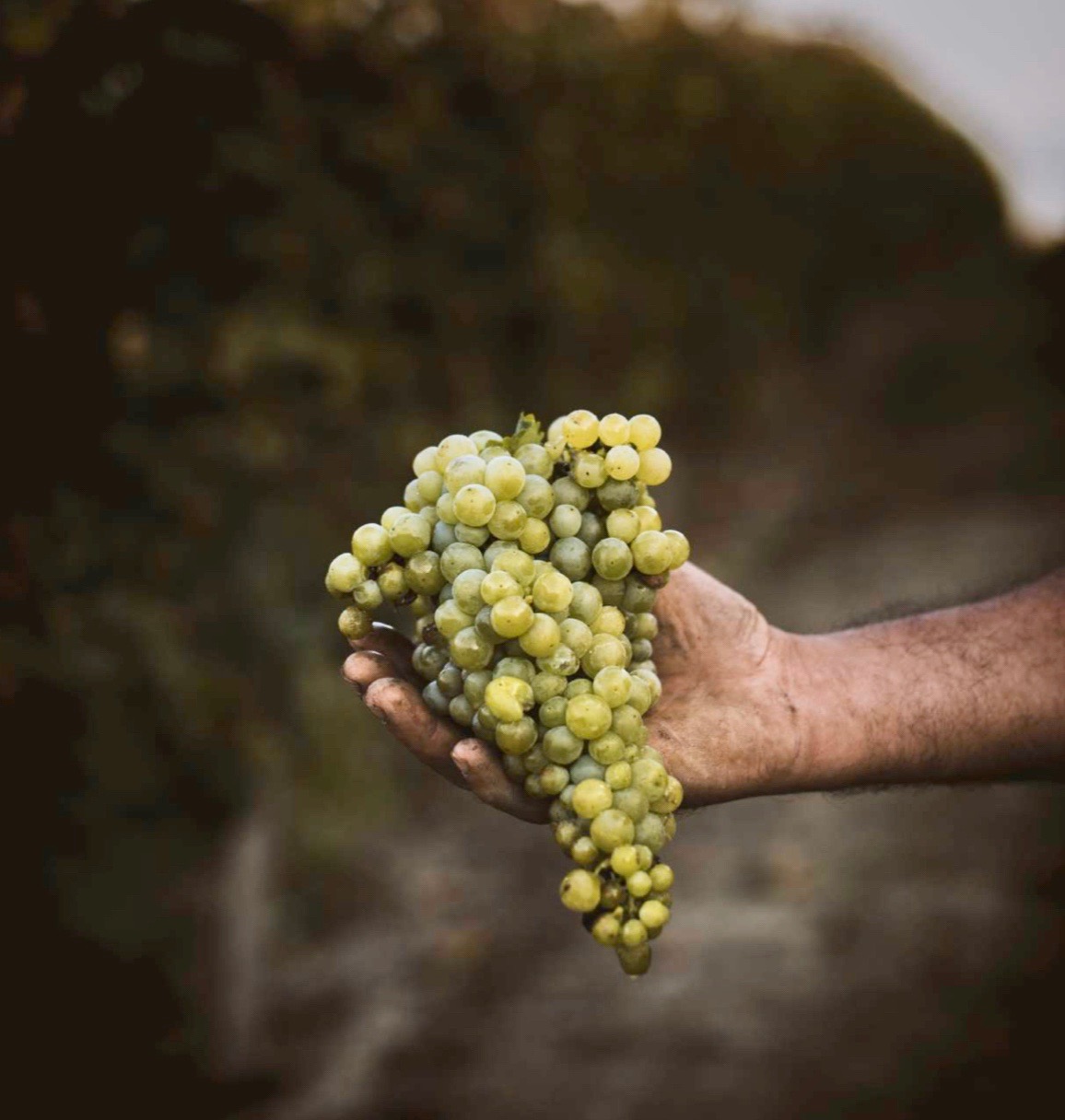
Matteo Soria Winery, founded in the 19th century, lies within the Asti Province of Piedmont, in the northwest corner of Italy. The winery specializes in Moscato d’Asti, a semi-sweet, lightly sparkling wine made from the Moscato Bianco grape. Alongside famous Piedmontese reds, like Barolo and Barbaresco, Moscato d'Asti is one of the most characteristic products of the region's winemaking.
The winery's 40 hectares are located in Castilgione Tinella, a prime growing area for Moscato Bianco grapes. The steep hills are rich with ‘white soil,’ a local term for the sandy soils that contribute to Moscato’s signature fragrant aromatics: peach, apricot, orange blossoms, honey, sage and lemon.
Matteo Soria, fourth generation to lead the winery, stopped by Grape Collective to chat about the unique process used to make these delicate wines. Soria also told us about the new Asti Secco DOCG, created in 2017, for the production of dry Moscato wines.
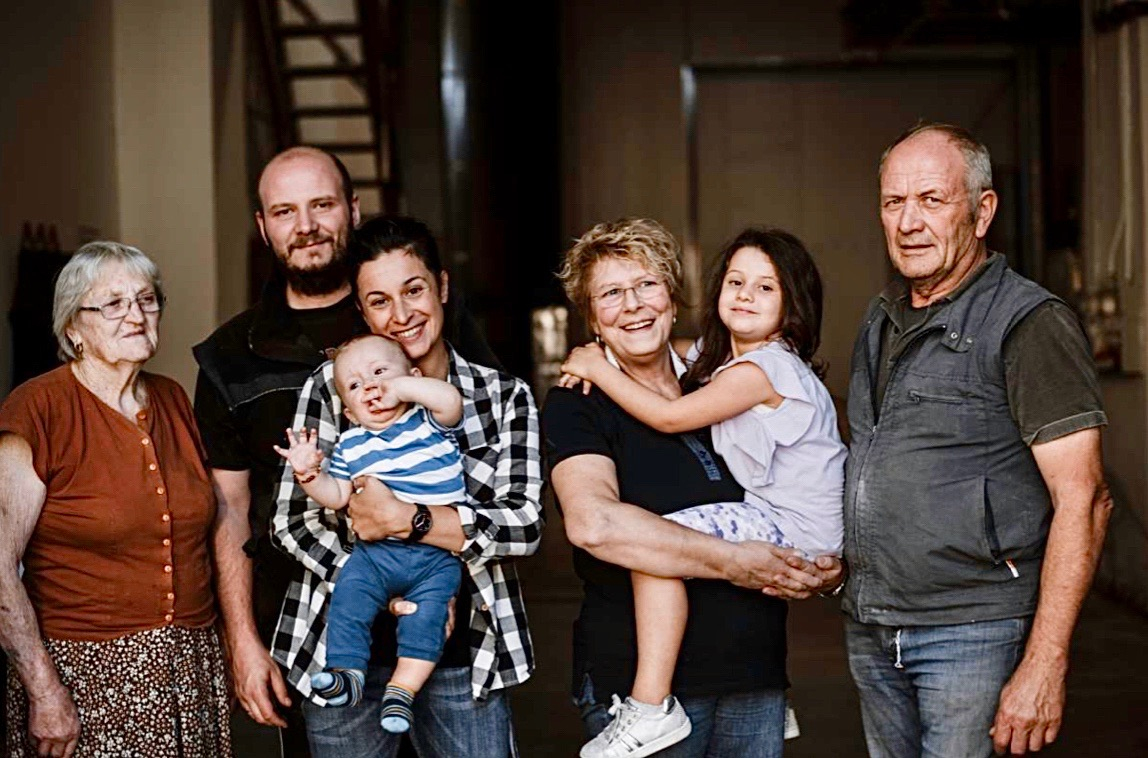 Lisa Denning: Did you always think you would go into the family business, or was there a time when you thought maybe you would do something else?
Lisa Denning: Did you always think you would go into the family business, or was there a time when you thought maybe you would do something else?
Matteo Soria: No. I was born at the vineyards and, as a child, played there with friends because there are vineyards everywhere, 360 degrees. Even for other friends that didn't have a winery or vineyards, they are linked to the Moscato because they were born there.
(Photo: Matteo Soria, second from left, with his family.)
Can you tell me how your family got into making Moscato d’Asti?
It started with my great grandfathers at a vineyard. They used to make red wines just for the family to drink at lunch and dinner. Normally it was Dolcetto. They produce a lot of Dolcetto in the area. It's a very easy wine to drink. And then we always had the Moscato vineyard because those vineyards are in Castiglione Tinella, Canelli, and Santo Stefano Belbo and the best producers of Moscato wines are in this area.
For example, Vietti has vineyards in Castiglione, and other big name wineries have vineyards in Castiglione and in Canelli. The Moscato was born there, in Castiglione, Canelli, Santo Stefano Belbo, then it spread all around the area. Also when you have a bad year, as 2014, in these places you will often have good quality because of the soil. So we started with my great-grandfather who used to just sell grapes to a big company. And then my grandfather, in the 50s and 60s, started bottling his own wine. They call the wine just Moscato, because the Moscato d'Asti DOCG didn’t start until 1993.
My grandfather was still selling grapes to Martini Rossi to produce Asti Spumanti and with a small part of it he produced his own wines. But it was in the 60s and 70s, with my father, when we started producing and bottling bigger volumes, and not just selling grapes. And every year my father bought some new vineyards and so now we have 40 acres of vineyard.
Our first bottling of Moscato d'Asti, was in 1984. We now produce about 15,000 bottles a week. Our goal is that we bottle every week. And so all year long the product is always fresh, just bottled. For the Moscato, it is important.
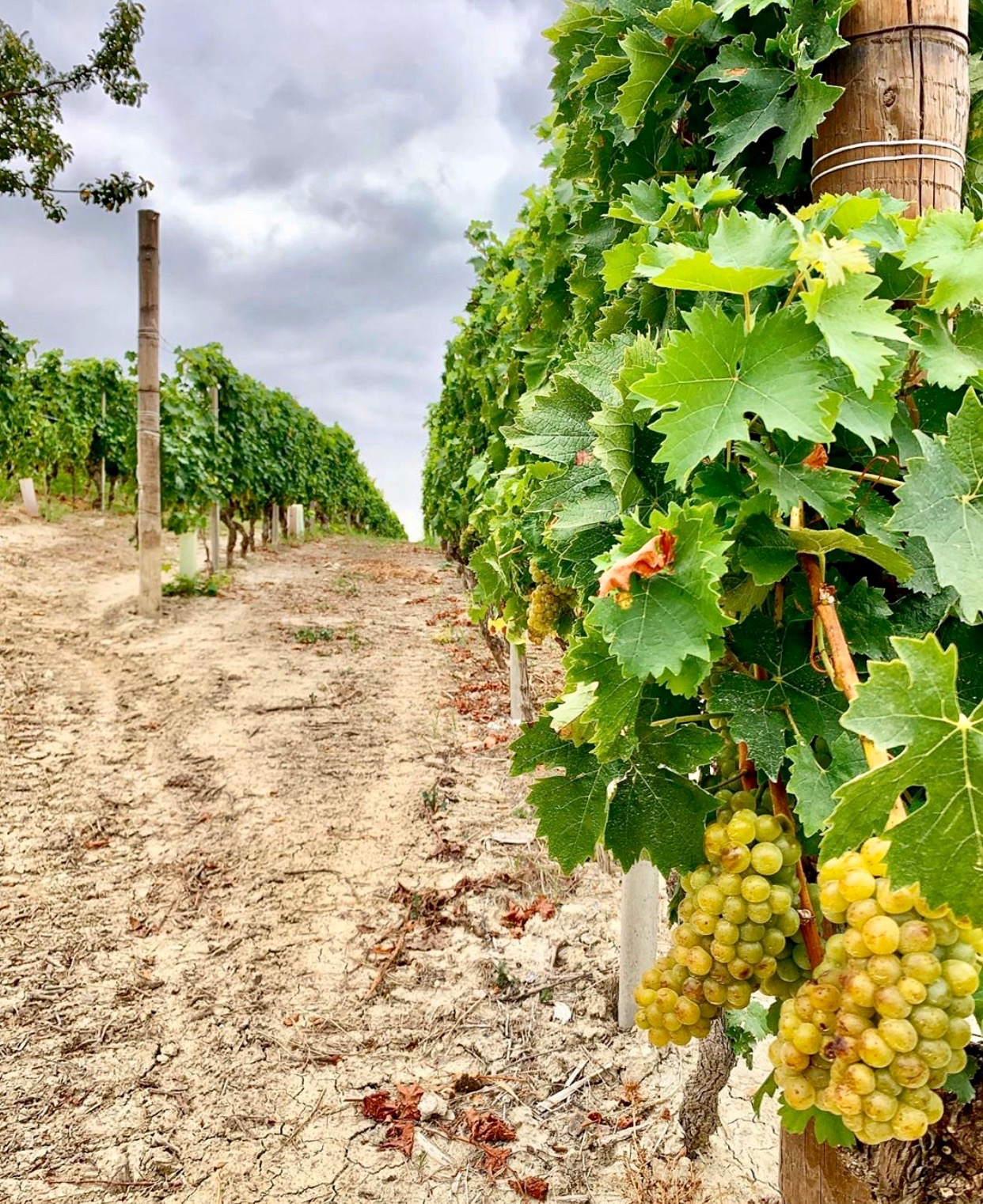 Where does it sit before it is bottled?
Where does it sit before it is bottled?
It's in big tanks that we keep as must. During the harvest, we press the grapes and we have the clean must that we keep cold all year long as must. No fermentation. Then every week, we move a part of this must, we warm it and then we make a fermentation. Every week a new fermentation and a new bottling.
When you make a new fermentation, it starts the life of the wine. So for example, we noticed, if you drink a Moscato bottled in, for example August 2018, the vintage is still 2017 but it's just bottled fresh. If you drink the same vintage but bottled in November of 2017, it has almost six months of bottle time, and so it's different.
And so, if you make a new fermentation every week, you always serve the product fresh and Moscato d’Asti is best served fresh. Also for the US it's important because we don't stock the wine in the winery. Every week, when we bottle, we send to customs in d'Arno and then it goes to the US and to other European countries.
Is that something unique that you do, the bottling every week, or is that how most producers do it?
It's something unique for all the producers of Moscato. If you go to big wineries, big companies, they bottle every day. My family is unique because we specialize in Moscato wine for my label of wines, but we also produce Moscato for some other producers. Small wineries bring me the grapes from the harvest and then I do everything else. They say, "Give me just 20 cases for me to use under my label” and so they have the product fully fresh, and when it's finished, they ask me again. For Moscato, it's a very technical product, and you need special machinery which costs a lot. Making still wine is easier compared to Moscato, to sparkling wine in general, because for sparkling wine, you need a lot of machinery.
What is it about your area that is good for growing the moscato grape?
Castiglione Canelli and Santo Stefano Belbo are unique because of the particular land. For example, in Castiglione Tinella, the soil gives the wine a lot of minerality, a lot of acidity, so compared to other Moscatos, the life of the wine is longer and with the higher acidity, you don’t feel the sugar. The wines are very balanced. Because if you feel just the sugar, the acidity is not very balanced. 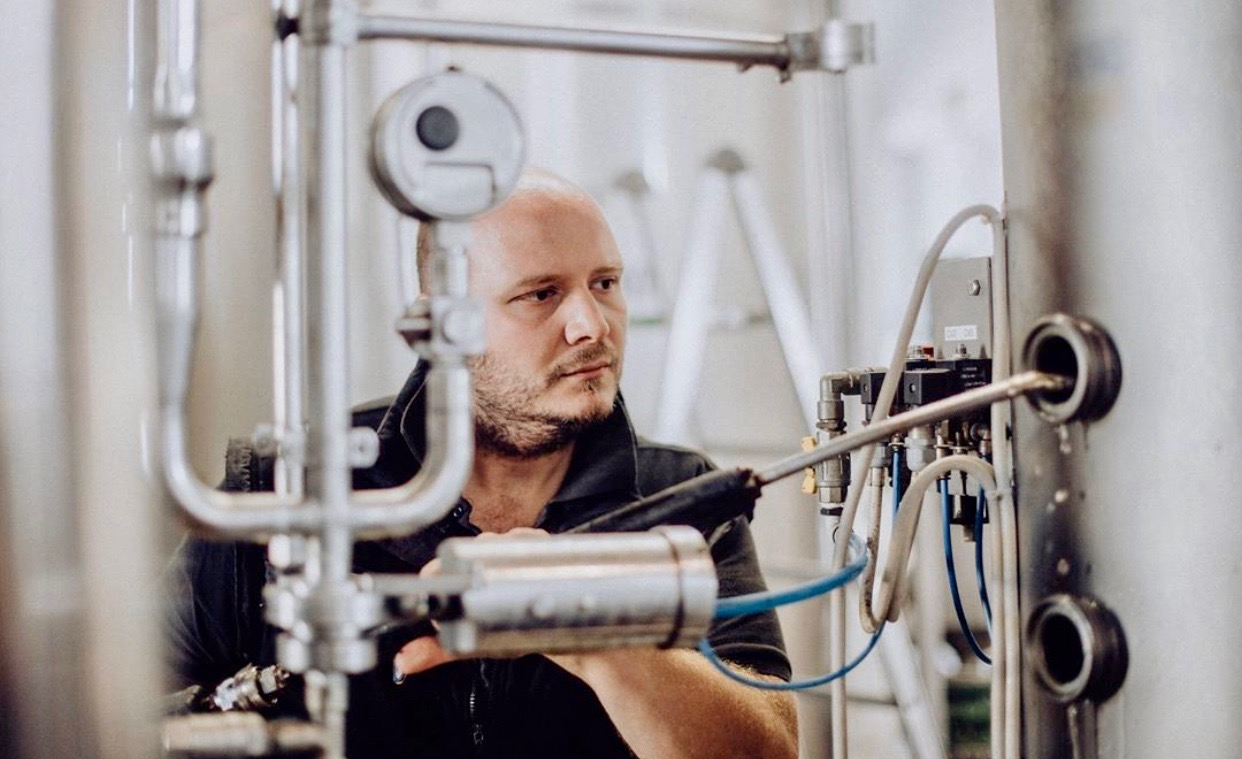 What is your philosophy of winemaking?
What is your philosophy of winemaking?
My philosophy starts in the vineyard. Our vineyards are very steep. My philosophy is that, first of all, you have to be in the right place, because otherwise you don't get good results, so the land is the first thing. We are lucky to be in this place because the land is the point where everything starts. So we are fortunate.
(Photo: Matteo working in the cellar.)
And we follow personally everything. We are workers and working in the vineyard, but followed by my father. My father stays in the vineyards and I'm always stuck in the winery because I have to bottle every week. Also in the winery, I do practically everything by myself. I have to work Saturdays, Sundays, and follow all the things that my father taught me. And so this is our idea of winemaking. 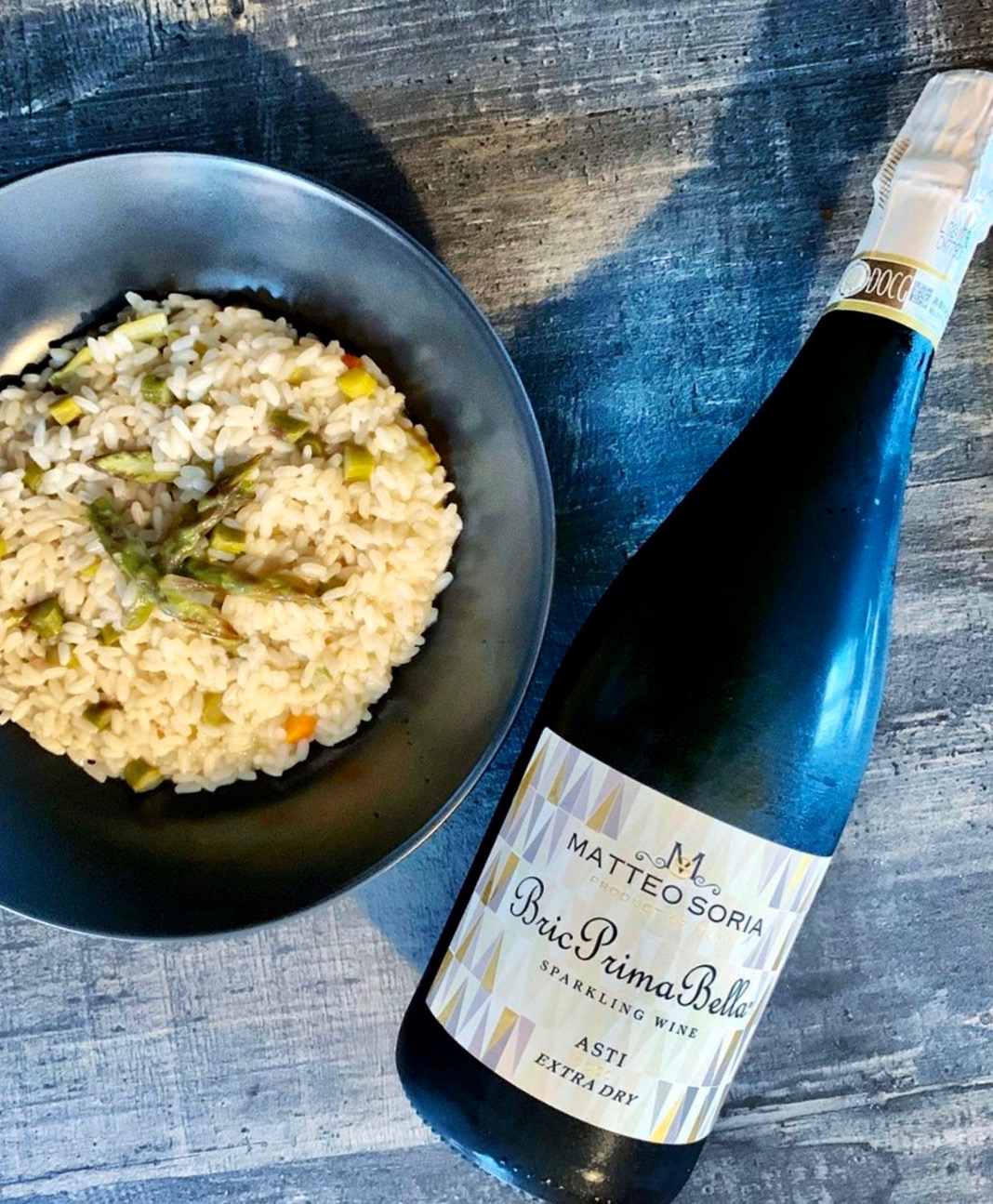 How does your Moscato d’Asti stand out in the crowd of similar wines?
How does your Moscato d’Asti stand out in the crowd of similar wines?
Many of the big companies making moscato d’Asti sell their wine to places like Walgreens, Costco, the big chains, and they put on the label just Asti Secco because the word reminds you of Prosecco. I don't like to do these kind of things, I make it extra dry, so I put on the label Asti Extra Dry, then I focus on my name and the name of the vineyard, and so it's something different. I focus on wine shops and restaurants, not the big market. My Moscato is 12 alcoholic degrees, more than the others, the others are more like 10, 11. And mine is 14 grams of sugar and the other Astis are about 25, 30, so theirs are sweeter. Mine is drier. And for me, it's better.
Speaking of dry wine, when was the Asti Secco DOCG created for dry wines?
It started for the 2017 vintage, so it's a new product and we have to invest money to let people know about this new product. Because if you go to an importer and you ask them to import this wine, they’ll say, "Okay but then what can I do with these cases if people don't ask for the wine?" And so we are trying to invest money in it to promote these new wines.
For example for the Parmesan cheese, they have a big consortium. But with parmesan cheese, you don't know Matteo's Parmesan, Valentina's Parmesan, Lisa's Parmesan, you know Parmesan in general. So the consortium works well because they sell just the name of the product. With Moscato d’Asti, they sell the big names. People know the big wineries, not the product in general. So Vietti for example, is everywhere with his wines because it's 30 years that he's here in the US. — four, five, six months a year, so people know him.
Who came up with the idea, after all these hundreds of years of sweet Moscato wines, to now make a dry one?
The market did, because the sweet wines are very linked to particular occasions, for example, for Christmas in Italy and Europe. But for the dry version, it's easy to sell and to drink, partly because the sweet one can be difficult to pair with food. With the dry version, from the appetizers to the meats, you can drink it.
In Franciacorta, they have Franciacorta dry sparkling wines. In Veneto they have Prosecco, but in Piedmont, we just have a small production of Alta Langa, which is Champenoise style. Before 2017, we didn't have anything in Piedmont like this, a dry sparkling wine that is a very easy wine to drink, to pair with everything. And so we decided to use this Asti, the sparkling, but to make it dry. So it was a good idea and I said, "Okay let's try."
And also for my winery, it's easier to sell this wine in my area because all the other wineries are big companies and they sell their Asti in the supermarket. The little wine shops say, "I can't sell the same bottle that you can find at the supermarket. And then I can't sell this bottle at 10 euros when the big supermarket brands costs less." So mine is just for wine shops and restaurants. Anyways, I don't have the possibility to work against these big companies because they have different prices. We own our vineyards, we follow everything, so we can't sell at a lower price. Also the label of the big companies, they're almost all similar, so we decided to make something different.
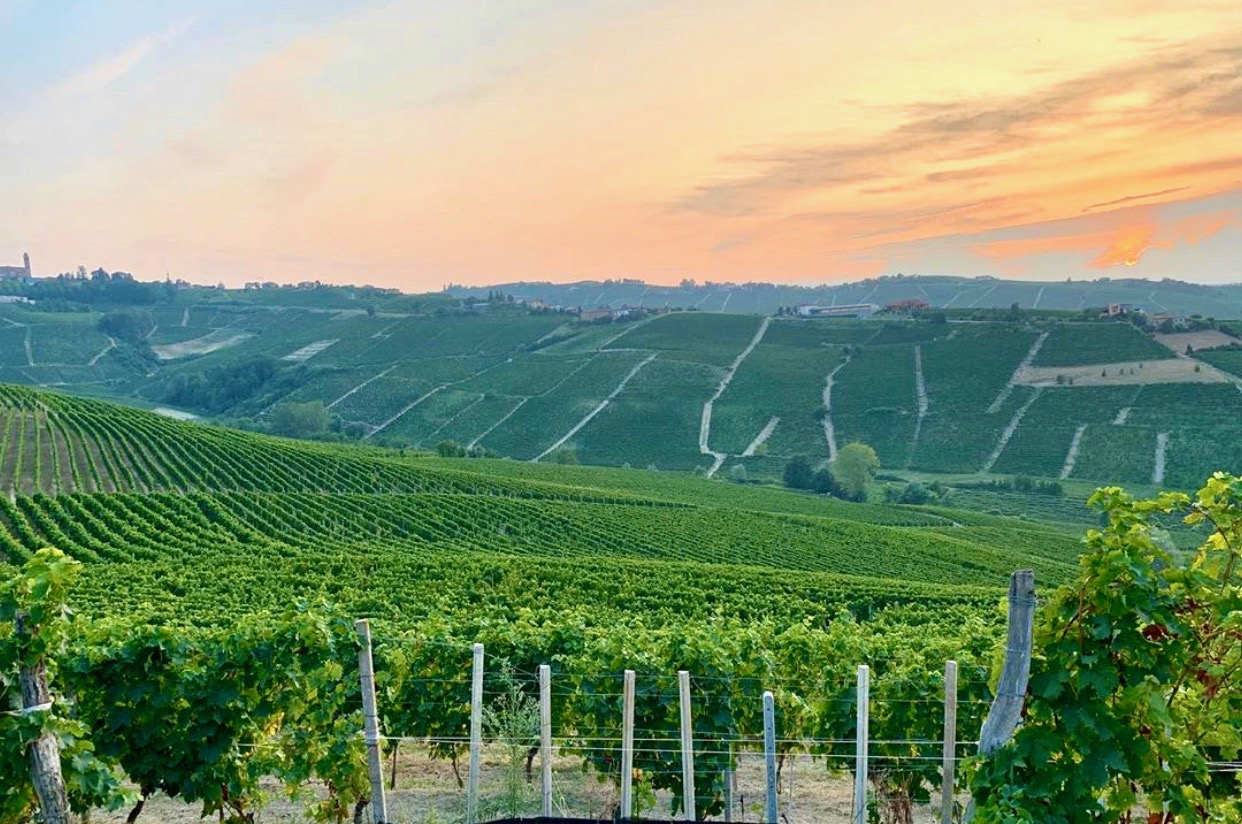 What changes have you see in your area as far as winemaking? What kind of evolution has there been in your area?
What changes have you see in your area as far as winemaking? What kind of evolution has there been in your area?
In our area, there has not been a lot of evolution because since forever, we have had Moscato grapes. But near our village, they are starting to plant new vineyards of Moscato.
The world of the Moscato is also changing a bit because of this new dry product we are trying to market and we are thinking about introducing a rosé. But I think just a sweet one because we have a dry one in Piedmont like d'Asti, like the Brachetto, they make it dry, so I don't think it would be good to go against them because we already have that product.
What's one of your favorite food pairings with dry Asti Secco?
For me, the aperitif. And then it’s great with spicy food, or fish, like sushi. It’s good with something fattier too because it can clean your mouth. We pair it with salami, cheese, cold cuts — it’s very easy to pair.
I had it with shrimp when I was there, and fried sage. The sage was great with both sweet and dry Moscato.
Yes, because you have some sage taste in Moscato d’Asti wines.
Is there anything else you want to tell us?
Now we are building a new, bigger winery. We will move all of the fermentation area and the labeling and bottling machines. So maybe I can bottle three days and then I can stay two, three weeks to label, to do everything. We also have a new tasting room, it's almost finished.
Sounds great. Next time I'm there, I'll have to come visit.
Read more about Moscato d'Asti by Lisa Denning on The Wine Chef: Three Reasons Moscato d'Asti Should be on Your Holiday Table.










